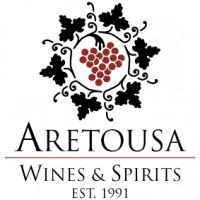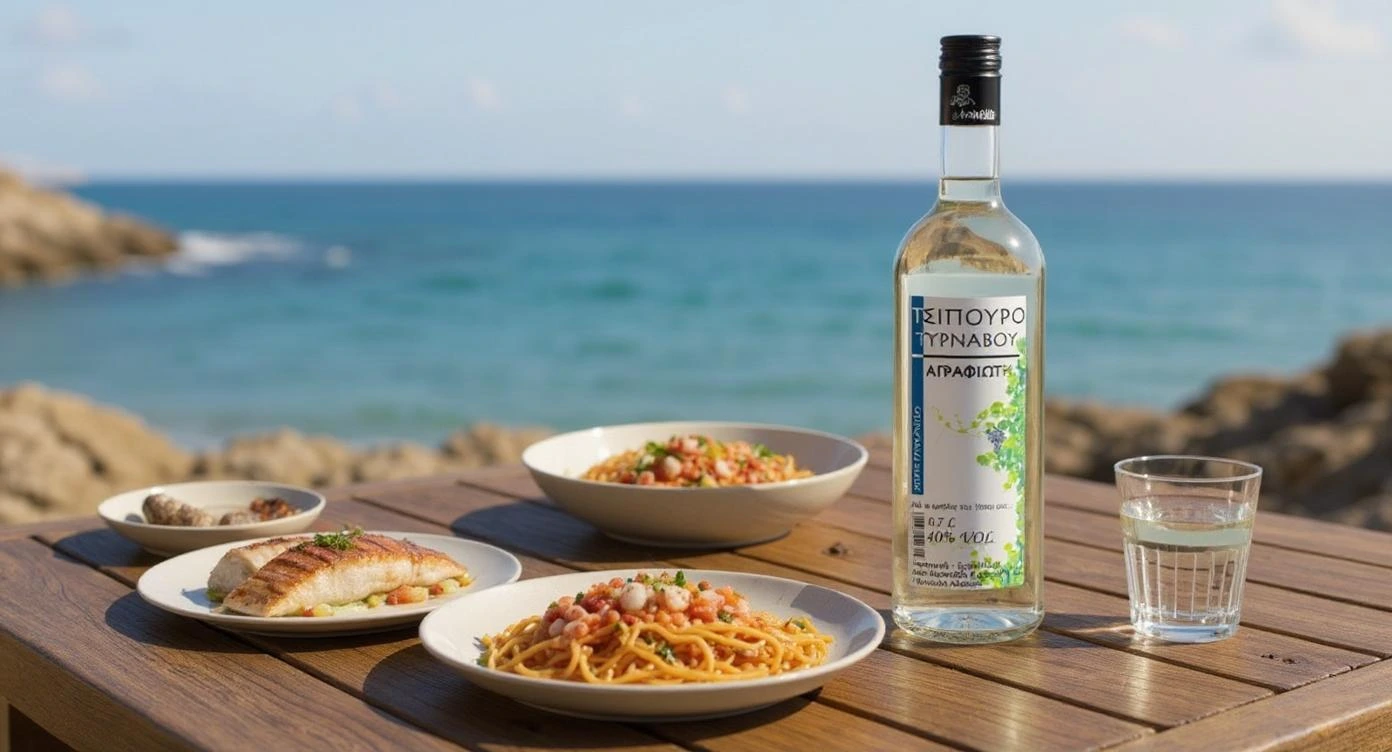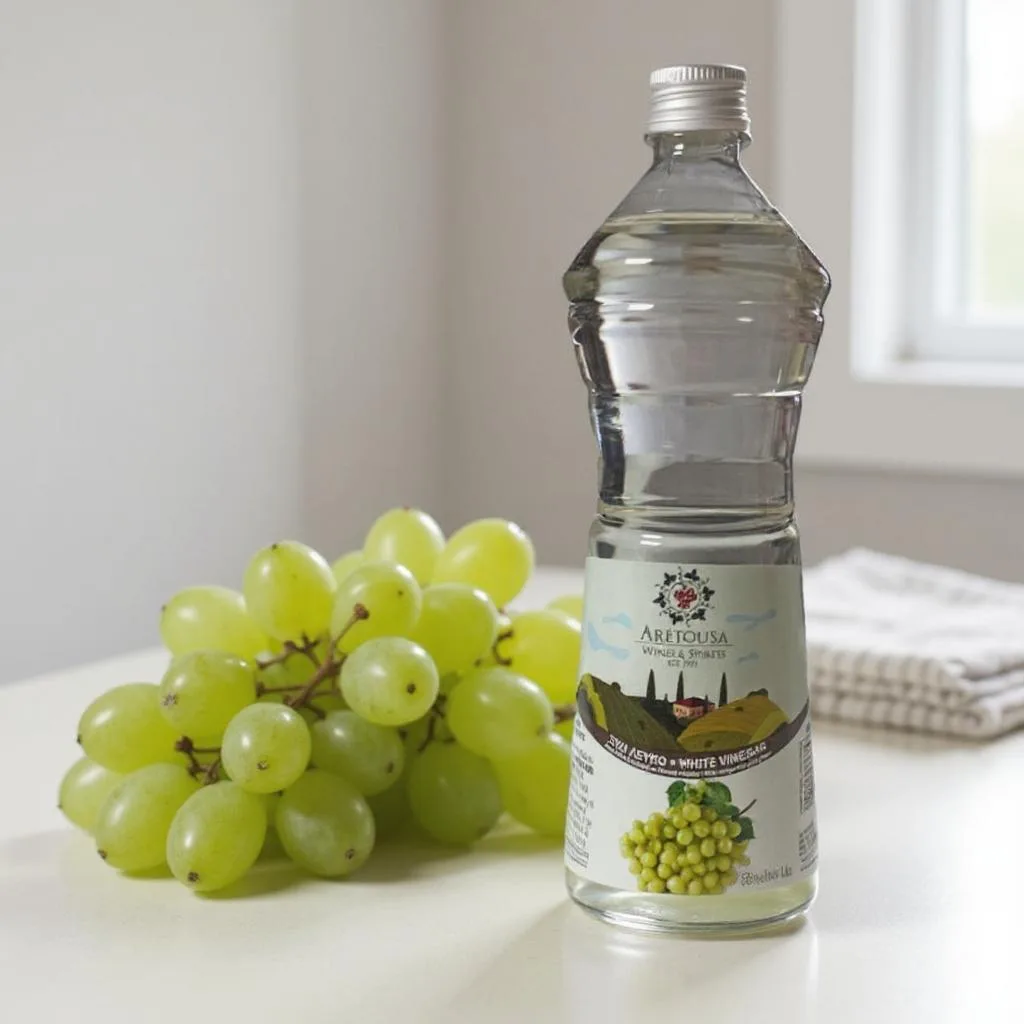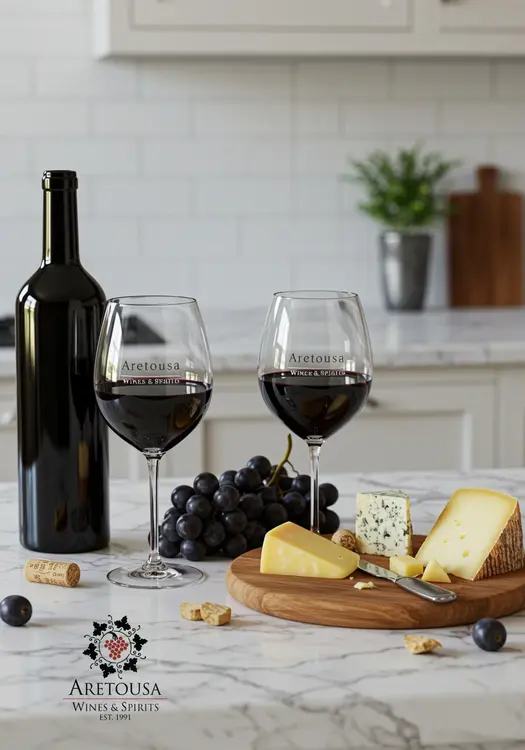How Many Calories Are in a Glass of Wine?
Τετάρτη 25 Ιουνίου 2025
In this article, we break down the calories by type of wine and tsipouro, so you can enjoy them responsibly — without excess and without stress.
Calories in a Glass of Wine: What to Know
The caloric value of a glass of wine depends on:
-
The type of wine (white, red, semi-sweet, etc.)
-
The alcohol content (% vol)
-
The sugar content
-
The serving size
Typical serving:
A standard glass of wine is about 150ml, equivalent to one portion.

Average Calories per Type (per 150ml serving)
| Beverage Type | Avg. Calories per 150ml | Notes |
|---|---|---|
| Dry White Wine | ~110 kcal | Low in calories, often 11–12% alc. |
| Dry Red Wine | ~125 kcal | Slightly richer due to alcohol & tannins |
| Semi-Sweet White | ~135 kcal | Higher sugars, more fruity taste |
| Semi-Sweet Red | ~140 kcal | Blend of sugar and alcohol |
| Tsipouro (40% vol) | ~105 kcal per 50ml shot | High alcohol, small serving |
Detailed Breakdown by Type:
Dry White Wine
Usually contains 11–12% alcohol and almost no sugar.
One 150ml glass equals 105–115 kcal.
A light, diet-friendly choice.
Dry Red Wine
Slightly higher in calories due to 13–14% alcohol and stronger body.
A 150ml glass provides around 125 kcal.
Semi-Sweet White or Red Wine
Contains natural residual sugars (approx. 4–5g per 100ml),
resulting in 135–140 kcal per 150ml.
More fruit-forward, soft, and rounded in taste.
Tsipouro (without anise)
Despite its high alcohol (~40%), it's consumed in small amounts.
One 50ml shot contains ~100–110 kcal,
similar to a glass of wine in calories, but more concentrated.
Should I Worry About Wine Calories?
Not really — when consumed in moderation, wine is not a threat to your figure or health.
In fact, wine has its own benefits:
-
Rich in polyphenols (antioxidants)
-
Traditionally paired with food — not overconsumed
-
Enhances pleasure and social moments
The key is balance. If you're following a healthy diet, one glass of wine per day can easily fit into your lifestyle.
What You Can Do:
Enjoy in moderation
Whether dry, semi-sweet, or tsipouro — balance is everything.
A glass of wine can be part of a healthy routine.
Know your options
Dry wines are slightly lower in calories, while semi-sweet wines offer a rounder, fruitier experience — perfect for those who enjoy softer flavors.
Choose based on the occasion
A chilled semi-sweet wine pairs beautifully with fruits, cheeses, or a light dessert.
A dry red wine enhances your main course with structure and richness.
Stay hydrated
Drink water alongside your wine — it helps you enjoy it longer and supports your body’s natural balance.
Don’t count calories — count moments
Wine is about joy, culture, and connection. When enjoyed responsibly, every wine has a place at your table.
Disclaimer:
The above information is provided solely for general informational purposes.
Caloric values may vary depending on label, winemaking process, residual sugars, and serving style.
This guide does not replace professional nutritional or medical advice.
For individual dietary concerns, please consult your doctor or a registered dietitian.





